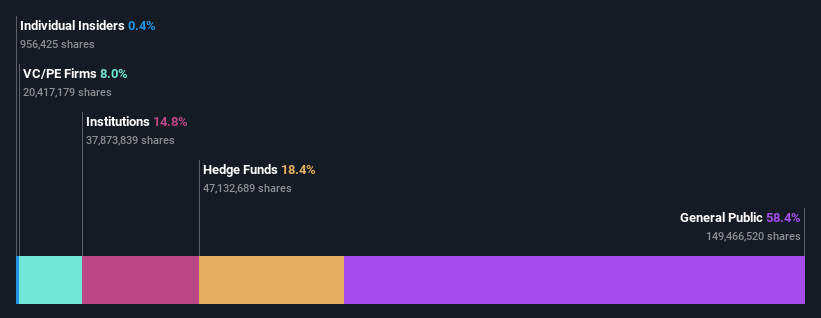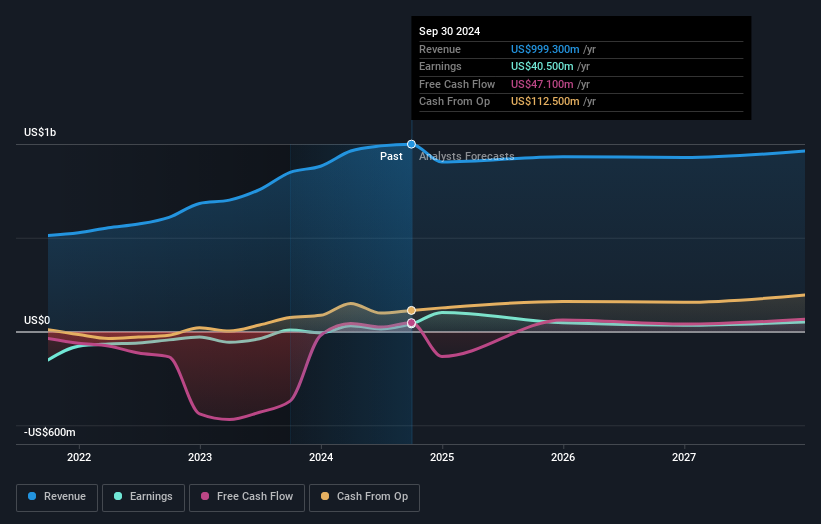- Norway
- /
- Energy Services
- /
- OB:SHLF
Individual investors among Shelf Drilling, Ltd.'s (OB:SHLF) largest stockholders and were hit after last week's 10.0% price drop

Key Insights
- Significant control over Shelf Drilling by individual investors implies that the general public has more power to influence management and governance-related decisions
- The top 22 shareholders own 42% of the company
- Recent sales by insiders
A look at the shareholders of Shelf Drilling, Ltd. (OB:SHLF) can tell us which group is most powerful. With 58% stake, individual investors possess the maximum shares in the company. Put another way, the group faces the maximum upside potential (or downside risk).
And following last week's 10.0% decline in share price, individual investors suffered the most losses.
Let's take a closer look to see what the different types of shareholders can tell us about Shelf Drilling.
View our latest analysis for Shelf Drilling

What Does The Institutional Ownership Tell Us About Shelf Drilling?
Many institutions measure their performance against an index that approximates the local market. So they usually pay more attention to companies that are included in major indices.
Shelf Drilling already has institutions on the share registry. Indeed, they own a respectable stake in the company. This can indicate that the company has a certain degree of credibility in the investment community. However, it is best to be wary of relying on the supposed validation that comes with institutional investors. They too, get it wrong sometimes. It is not uncommon to see a big share price drop if two large institutional investors try to sell out of a stock at the same time. So it is worth checking the past earnings trajectory of Shelf Drilling, (below). Of course, keep in mind that there are other factors to consider, too.

Our data indicates that hedge funds own 18% of Shelf Drilling. That catches my attention because hedge funds sometimes try to influence management, or bring about changes that will create near term value for shareholders. The company's largest shareholder is Caius Capital LLP, with ownership of 10.0%. Condire Investors, LLC is the second largest shareholder owning 8.5% of common stock, and Castle Harlan, Inc. holds about 8.0% of the company stock.
A deeper look at our ownership data shows that the top 22 shareholders collectively hold less than half of the register, suggesting a large group of small holders where no single shareholder has a majority.
While it makes sense to study institutional ownership data for a company, it also makes sense to study analyst sentiments to know which way the wind is blowing. There is a little analyst coverage of the stock, but not much. So there is room for it to gain more coverage.
Insider Ownership Of Shelf Drilling
While the precise definition of an insider can be subjective, almost everyone considers board members to be insiders. Company management run the business, but the CEO will answer to the board, even if he or she is a member of it.
Insider ownership is positive when it signals leadership are thinking like the true owners of the company. However, high insider ownership can also give immense power to a small group within the company. This can be negative in some circumstances.
Our most recent data indicates that insiders own less than 1% of Shelf Drilling, Ltd.. It has a market capitalization of just kr2.3b, and the board has only kr8.6m worth of shares in their own names. Many tend to prefer to see a board with bigger shareholdings. A good next step might be to take a look at this free summary of insider buying and selling.
General Public Ownership
The general public -- including retail investors -- own 58% of Shelf Drilling. This size of ownership gives investors from the general public some collective power. They can and probably do influence decisions on executive compensation, dividend policies and proposed business acquisitions.
Private Equity Ownership
With a stake of 8.0%, private equity firms could influence the Shelf Drilling board. Sometimes we see private equity stick around for the long term, but generally speaking they have a shorter investment horizon and -- as the name suggests -- don't invest in public companies much. After some time they may look to sell and redeploy capital elsewhere.
Next Steps:
It's always worth thinking about the different groups who own shares in a company. But to understand Shelf Drilling better, we need to consider many other factors. Case in point: We've spotted 5 warning signs for Shelf Drilling you should be aware of, and 2 of them make us uncomfortable.
If you are like me, you may want to think about whether this company will grow or shrink. Luckily, you can check this free report showing analyst forecasts for its future.
NB: Figures in this article are calculated using data from the last twelve months, which refer to the 12-month period ending on the last date of the month the financial statement is dated. This may not be consistent with full year annual report figures.
New: Manage All Your Stock Portfolios in One Place
We've created the ultimate portfolio companion for stock investors, and it's free.
• Connect an unlimited number of Portfolios and see your total in one currency
• Be alerted to new Warning Signs or Risks via email or mobile
• Track the Fair Value of your stocks
Have feedback on this article? Concerned about the content? Get in touch with us directly. Alternatively, email editorial-team (at) simplywallst.com.
This article by Simply Wall St is general in nature. We provide commentary based on historical data and analyst forecasts only using an unbiased methodology and our articles are not intended to be financial advice. It does not constitute a recommendation to buy or sell any stock, and does not take account of your objectives, or your financial situation. We aim to bring you long-term focused analysis driven by fundamental data. Note that our analysis may not factor in the latest price-sensitive company announcements or qualitative material. Simply Wall St has no position in any stocks mentioned.
About OB:SHLF
Shelf Drilling
Operates as a shallow water offshore drilling contractor in the Middle East, North Africa, the Mediterranean, Southeast Asia, India, West Africa, and the North Sea.
Undervalued moderate.
Similar Companies
Market Insights
Community Narratives



